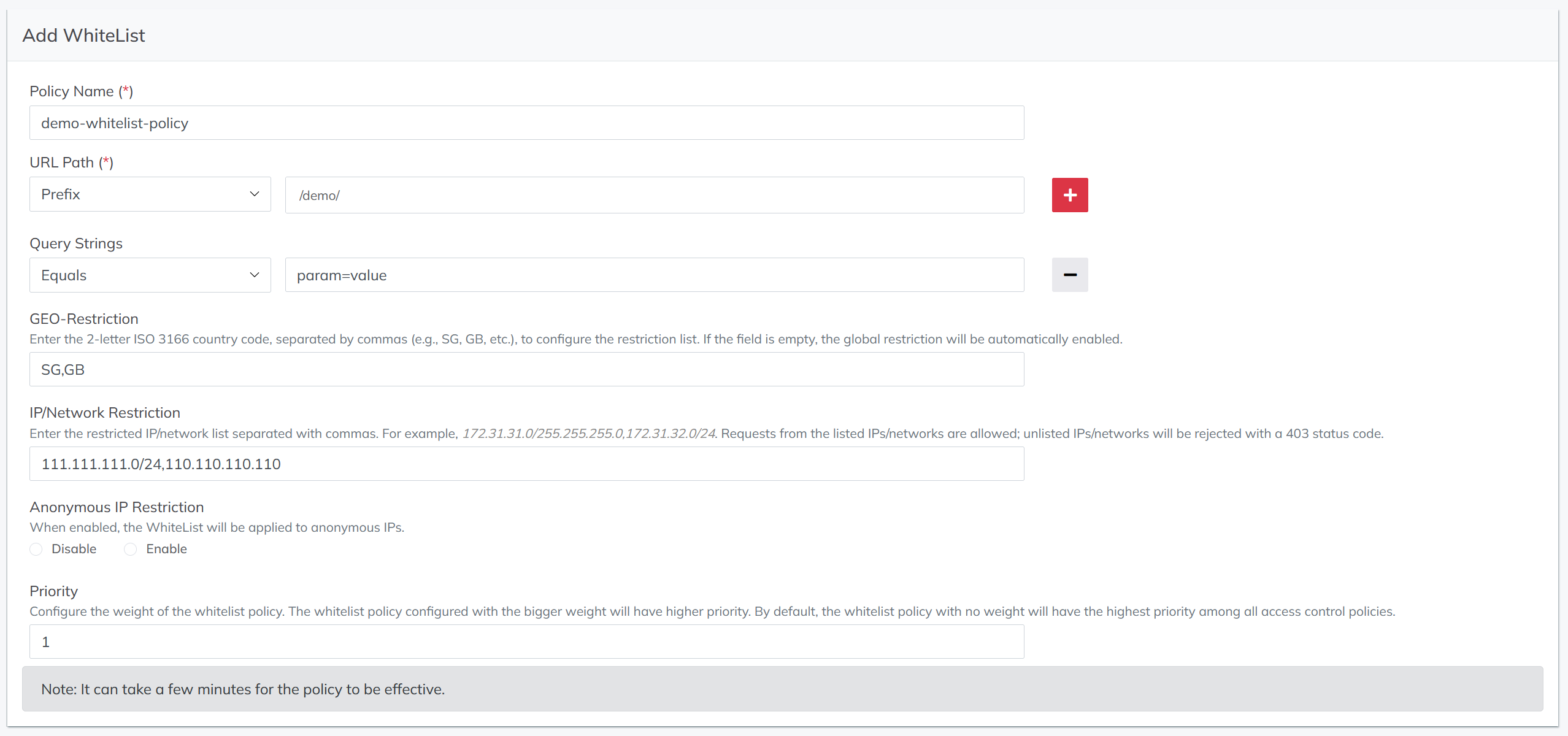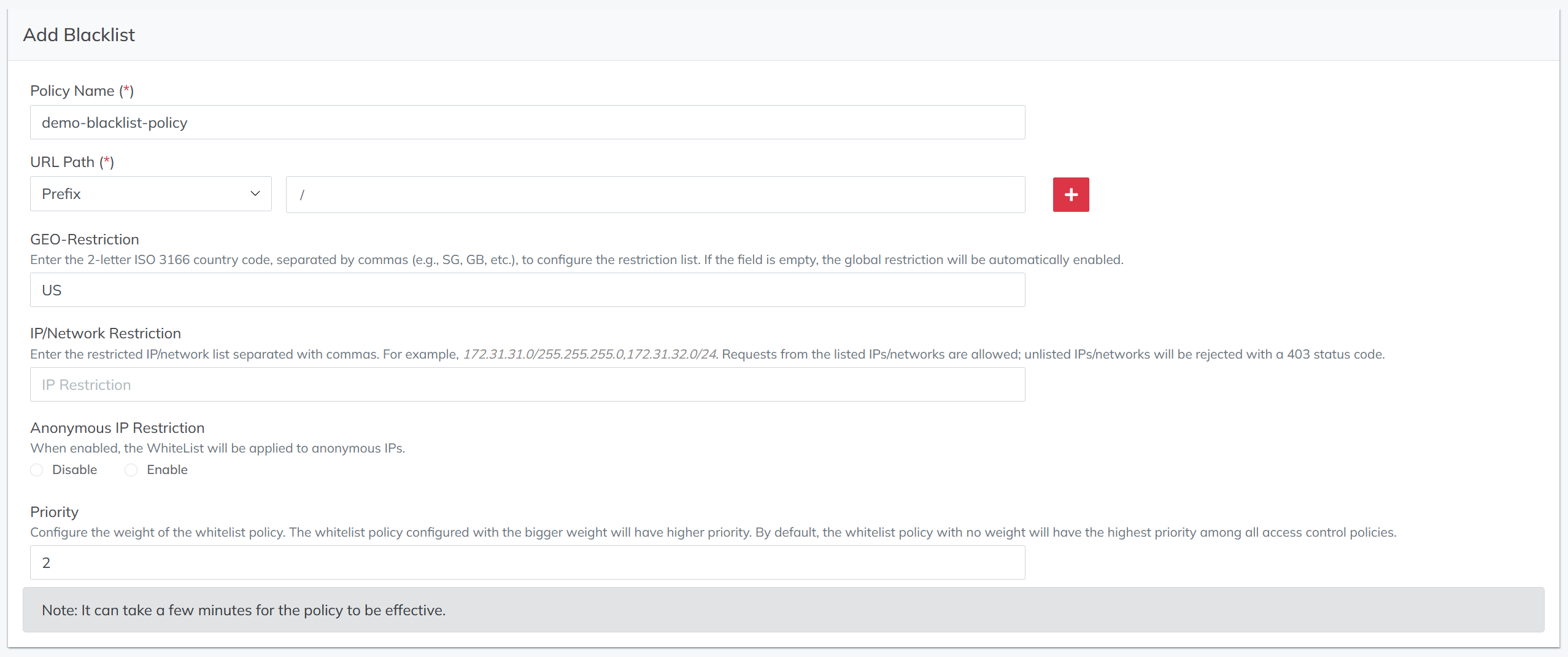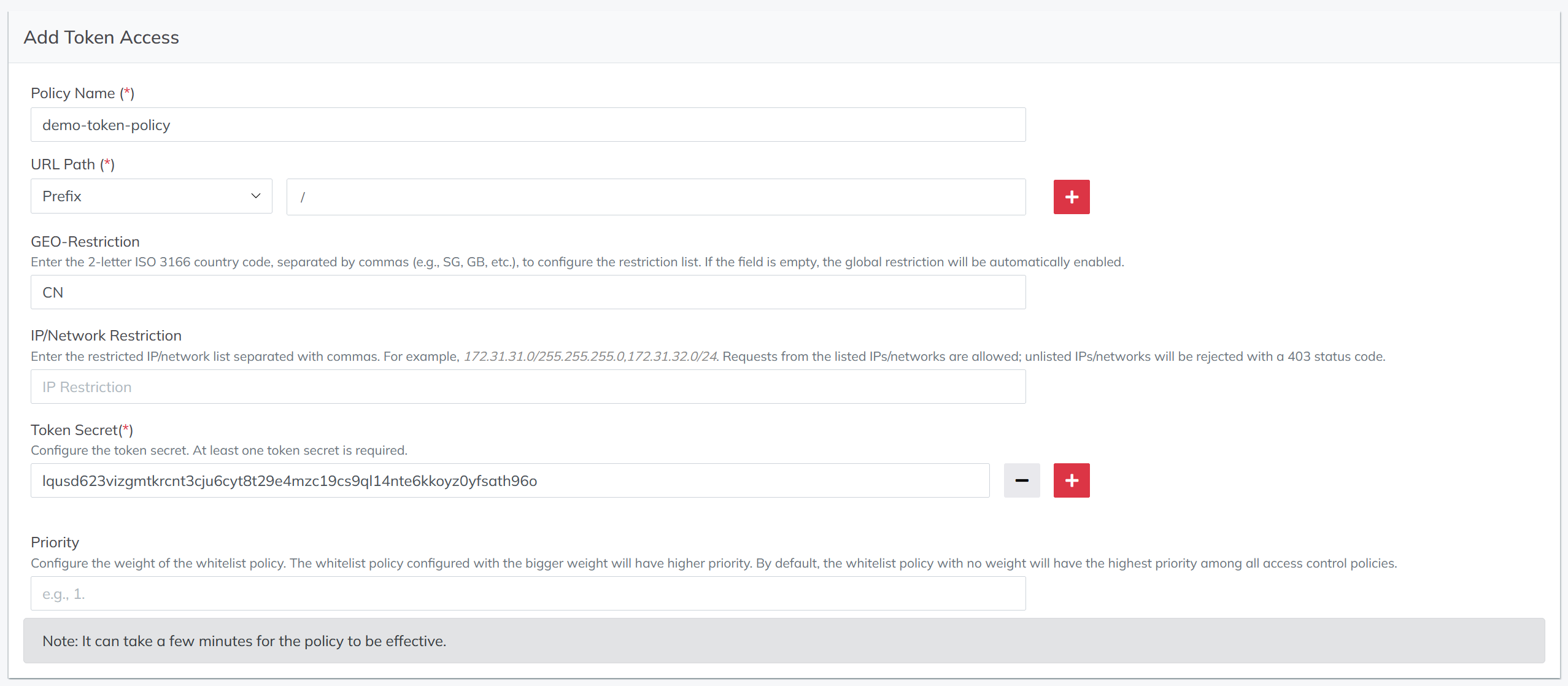Access Control
Access control leverages policies, including whitelist, blacklist, token-based access, and rate limiting, to control users' access. If multiple policies match a request, the policy with higher priority will be applied.
Whitelist Policy
Requests that do not match the whitelist rules are rejected with an HTTP 403 response.
- URL Path – Match by prefix, suffix, exact, or regex.
- Query String – Match by prefix, suffix, exact, or regex.
- GEO-Restriction – Allowed countries.
- IP/Network Restriction – Allowed source IP ranges.
- Anonymous IP Restriction – Allow or block anonymous IPs.
- Priority – Determines precedence when conflicts occur.

Blacklist Policy
Requests matching the blacklist rules are rejected with an HTTP 403 response.
- URL Path – Match by prefix, suffix, exact, or regex.
- Query String – Match by prefix, suffix, exact, or regex.
- GEO-Restriction – Blocked countries.
- IP/Network Restriction – Blocked source IP ranges.
- Anonymous IP Restriction – Allow or block anonymous IPs.
- Priority – Determines precedence when conflicts occur.

Token Access Policy
CDN checks the token access signature of the requests. Invalid signatures are rejected with HTTP 403.
- URL Path – Paths requiring signature verification.
- Query String – Query parameters requiring signature verification.
- GEO-Restriction – Countries requiring verification.
- IP/Network Restriction – IP ranges requiring verification.
- Token Secret – Secrets used to generate signatures (multiple allowed; must be securely stored).
- Priority – Determines precedence when conflicts occur.

Rate Limiting
Rate limiting restricts the number of requests from the same user IP within a defined time window. Requests exceeding the limit are rejected with HTTP 403 until the next time window starts.
- Request – Maximum number of requests per time window.
- Time Window – Duration in seconds before counters reset.
- Ignore URL Path – When enabled, different URLs from the same IP are counted separately.
- Ignore Query String – When enabled, different query strings for the same URL are counted separately (this option applies only when Ignore URL Path is disabled).
